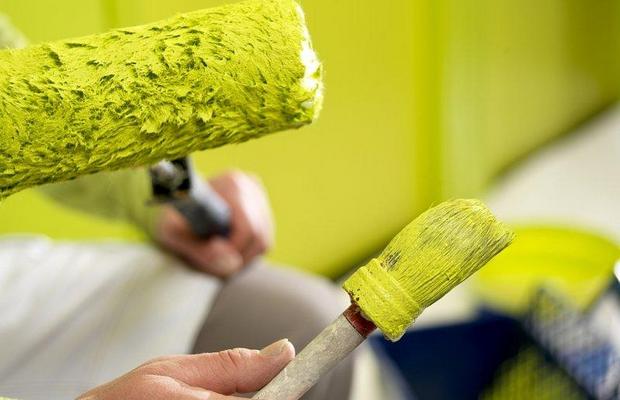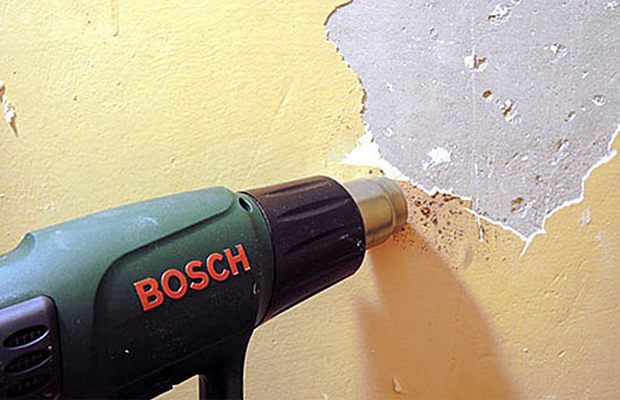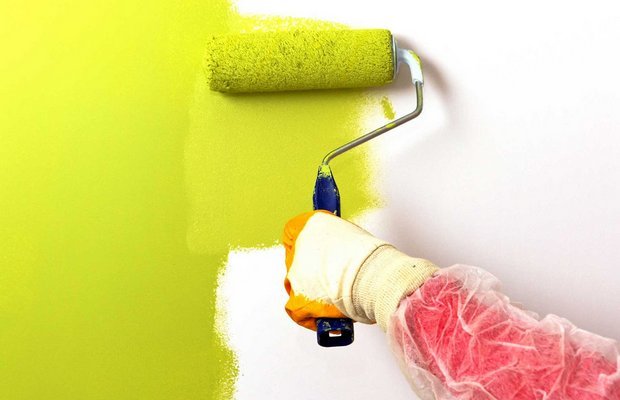How to paint the walls in the bathroom - all the features of the operation
It is enough for any home master to figure out how to paint the walls in the bathroom to make an inexpensive and at the same time very elegant finish in this room.
1
In Soviet times, painting a bathroom was almost the only option for finishing it. Good paint resisted the extreme temperatures and high humidity that are always present in this room. With the advent of new finishing materials on the domestic market, coloring has become unpopular.
Painted bathroom
Among the majority of consumers, it was associated with cheap and not entirely poor-quality repairs. But in recent years, paints and varnishes have again become in demand. In fact, they have found a rebirth, thanks to European designers. It is in Europe that there is a real boom in this finish option. Especially when it comes to renovating large bathrooms.
Painting the walls in the bathroom, as a way of modern decoration, has the following undoubted advantages:
- it is easy to do it yourself, with a minimum of experience in finishing work;
- the cost of most paints is quite acceptable;
- it makes it possible for a person to show his creative talents (it is easy to choose any color of the coating).
In addition, painted surfaces are easy to care for. Walls can be easily washed with a sponge or cloth using conventional detergents.
The disadvantages of painting walls include the following facts:
- relatively low durability of paint and varnish coatings (for example, when compared with finishing a bathroom with ceramic tiles);
- the need for careful preparation of walls for painting;
- high susceptibility of painted surfaces to mechanical stress (paint is easily damaged by impacts).
Experts do not advise painting walls in bathrooms with small dimensions, as well as in cases where there is no well-functioning ventilation system in the room. In such situations, it is better to give preference to other methods of decoration.
2
Materials for painting walls in the room for receiving water procedures must have antibacterial protection. In a humid environment, there is an active growth of fungi and a variety of microorganisms. Only paint and varnish compositions with special additives are able to resist their development. Most often, the walls in the bathroom are decorated with the following paints:
- latex and acrylic. These water-dispersion compositions protect walls from the appearance of bacteria, well protect surfaces from physical influences, and are very durable. Important point! Latex paints make it possible to obtain a matte surface of the walls, on which stains from dried water drops are practically invisible.
- Water emulsion. A traditional dyeing material used for a very long time. easy to apply with your own hands, they do not emit unpleasant odors, are considered completely harmless and environmentally friendly. But the surfaces painted with them require special care. Water emulsion is afraid of most detergents. Therefore, the walls on which it is applied should be washed very carefully, with a minimum of chemistry.
- Oily. These compounds are characterized by a pungent odor, they dry for a long time on the treated surface. But oil paint remarkably resists moisture, mechanical shock and elevated temperature. At the same time, it is inexpensive.
- Chlorinated rubber. Paints that are very popular in European countries. We have recently started selling them. Such compositions have many operational advantages, but their cost is objectively high.

The choice of paint for the bathroom
Also, universal alkyd enamels are often used to decorate walls in the bathroom. Formally, they are intended for outdoor work, but they are also suitable for finishing rooms with special operating conditions. Such compositions give a good appearance to the surfaces, when used, they do not leave stains on the walls, they dry quickly. And most importantly - alkyd enamels perfectly protect the walls from moisture.
3
If you want paint and varnish materials to adhere well to the walls, you need to properly prepare the surfaces for painting. You will need to remove the old coating with your own hands, carefully align the walls, rid them of cracks and cracks, and then prime them.

Removing old paint
The paint that has served its purpose is removed with a grinder equipped with a flexible disk, a perforator and a chisel, sandpaper, a spatula, and a scraper. Home craftsmen also often use special attachments for an electric drill, which allow you to get rid of old coatings in the most inconvenient places, a chisel and a puncher. Professionals recommend using diamond nozzles on a grinder to remove unnecessary finishes. But not every person has such a power tool.
After cleaning the walls in the bathroom, they need to be checked for mold and fungus and, if necessary, treat the problem areas with an antiseptic, bleach or blue vitriol. Then wipe the surfaces with a damp cloth and proceed to puttying them. For these purposes, putty compositions are used for indoor work.
Note! The putty you choose should have a high moisture resistance index. Ideal from this point of view are compositions based on latex or acrylic.
After sealing the cracks, you need to wait until the putty dries, and then remove all small irregularities from the wall with a grinder or sandpaper. The next step is surface treatment with a primer. It is applied in several layers. Buy primer solutions that have antibacterial characteristics. Then the walls will subsequently not be affected by the fungus. The best primer for bathroom surfaces is latex based.
4
Before painting, it is advisable to dry the bathroom with an electric heater. Such a procedure is necessary, since even well-prepared concrete walls absorb moisture.

DIY wall painting
Directly painting is done with a spray gun, roller or. The specific instrument is up to you. In doing so, remember that:
- It is difficult to handle corners and small irregularities on the walls with a roller. But its use allows you to save paint due to the fact that it is superimposed in a thin layer on the surface.
- When using a brush, the consumption of paintwork material will be large. But the texture of the surface will be denser.
- The spray gun is the easiest to work with. True, not all home craftsmen have it. And after painting, it is required to disassemble, rinse (and very carefully) each part of this device. This is not to everyone's liking.
In everyday life, it is easiest to paint walls with a brush and roller. This combined method will provide the perfect result of finishing activities.
The coloring operation itself is performed in two layers as follows:
- Prepare (according to the manufacturer's instructions) the paint.
- Apply the first layer. Better to do it with a brush. It makes it possible to process the joints and corners of the walls with the highest quality. In addition, the brush guarantees a dense layer of paint, which allows you to mask small flaws in leveling and grinding the surface.
- Waiting for the painted walls to dry.
- Apply the second layer. Now with the help of a roller. If you are using a water-based emulsion, the bristles of this tool should be made of acrylic. For painting with latex and oil compositions, choose a roller with polyamide pile.






